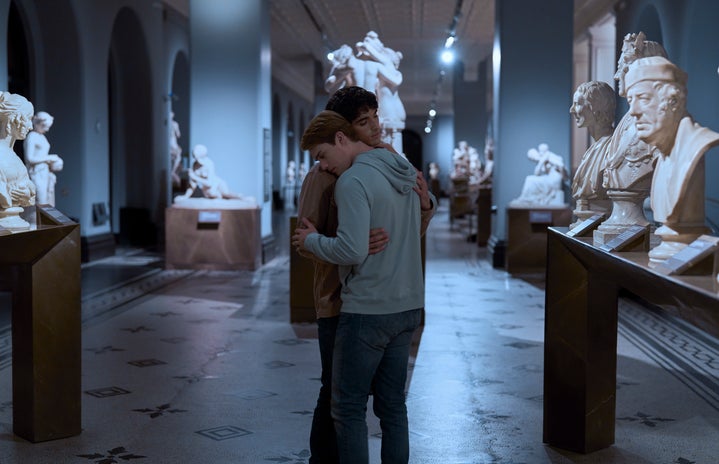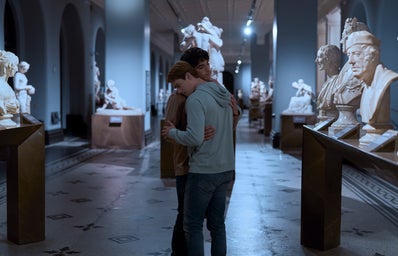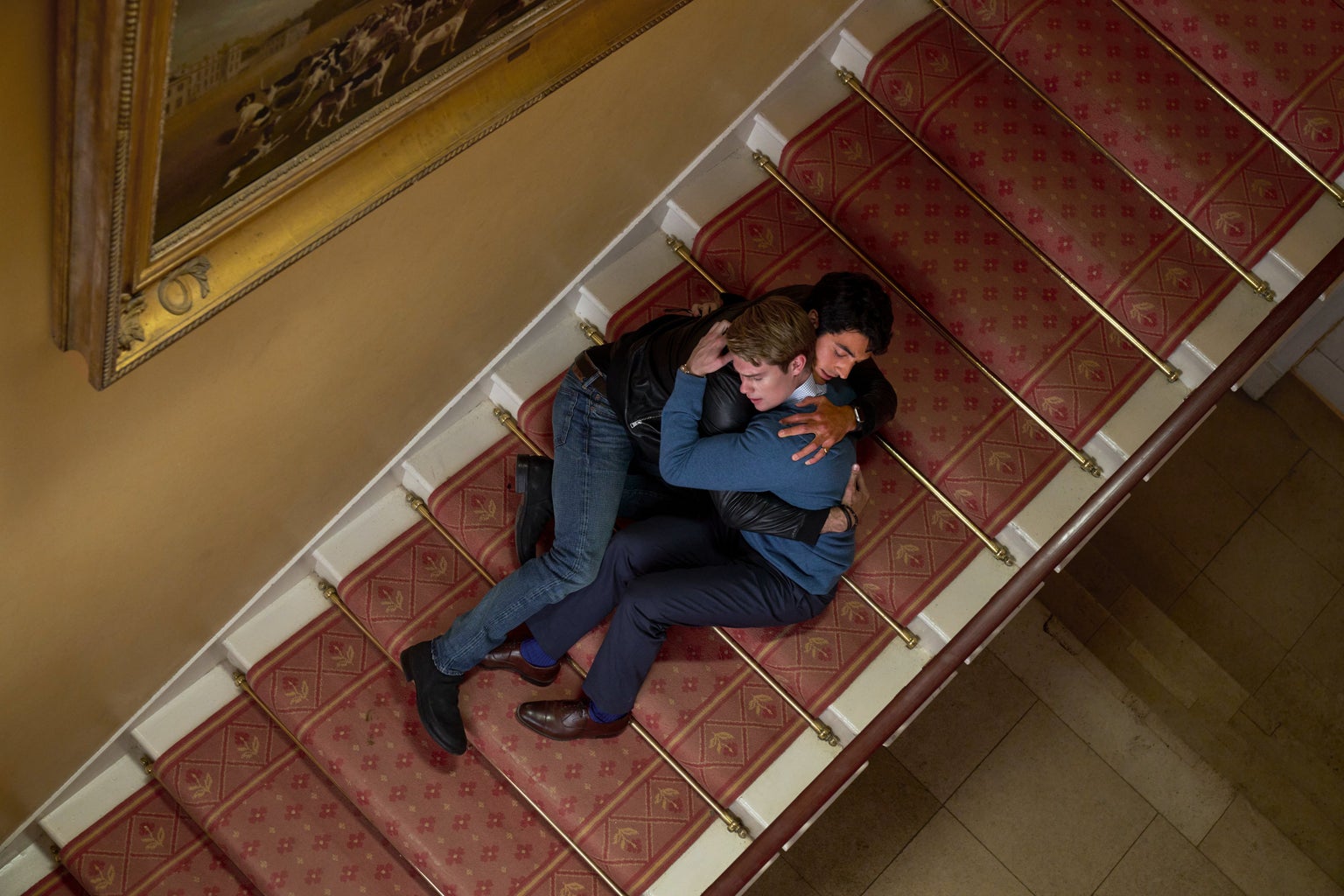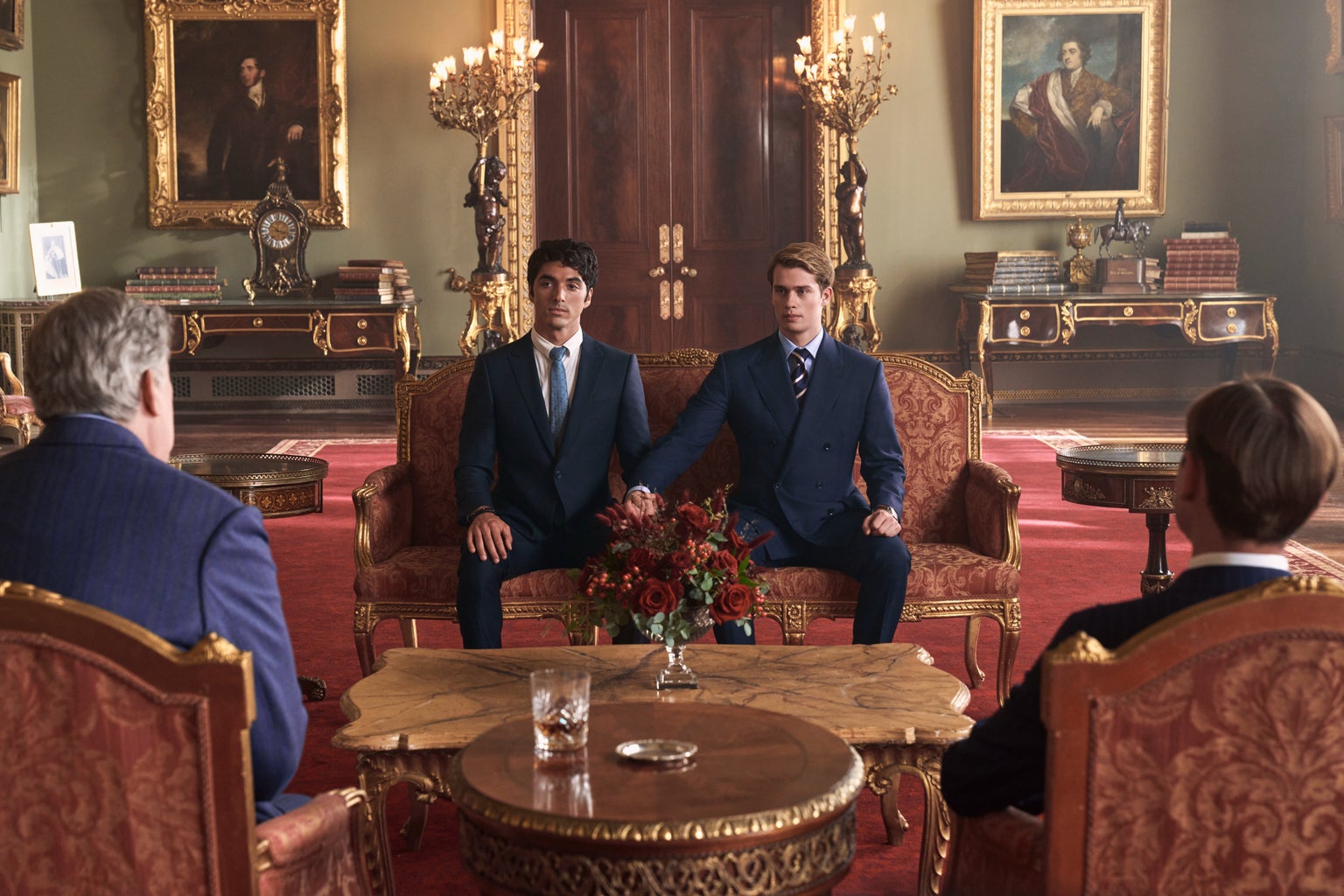The Red, White & Royal Blue movie just dropped on Prime Video after years of anticipation from fans of Casey McQuiston’s beloved novel. With the promise to deliver a faithful yet refreshing adaptation, the film had a tough task to achieve. If you, like me, have read the book and couldn’t wait to watch it on screen – or even if you’re new to the hype – we have lots to discuss. Shall we?
What is Red, White & Royal Blue about?
If you’ve never heard of Red, White & Royal Blue before, that’s totally okay, though I bet it was hard to avoid seeing something about it online this past week. The film was released on Prime Video last Friday (11) and has since been crowned the streaming’s number one movie worldwide.
It is based on a homonymous book from author Casey McQuiston, which has spent more than 20 weeks on the New York Times’ Best Seller List and it’s a BookTok sensation, hence the anticipation and commotion attached to the film.
The story follows Alex Claremont-Diaz, the charming and idealistic son of Ellen Claremont, the president of the United States. For years, he has nurtured a rivalry and spite towards Henry, the prince of England and second in line to the throne.
When the two meet again and cause an “international incident” involving being covered in cake at a royal wedding, they are forced to spend some time together to convince the press that they are actually good friends. This, of course, ends up with them getting to know each other for real and, eventually, falling in love.
The chemistry is chemistrying!
Like I mentioned before, this is a very beloved story, so of course fans had a lot of opinions when the casting for the movie was announced. Actors Taylor Zakhar-Perez and Nicholas Galitzine – who play Alex and Henry, respectively – received a lot of backlash after it was known that they had taken these roles.
One of the issues was around the fact that they were a bit older than the characters were supposed to be in the book (Galitzine is now 28, and TZP is 31, while the protagonists are in their early 20s). The other – and more controversial – problem was the casting of two, as far as we know, straight actors to play queer characters.
While the critics had concerns about representation, they also questioned how well these actors could portray the deep love and desire that Alex and Henry feel for each other. The promotion of the movie before the SAG-AFTRA strike hit was a bit weird and there wasn’t much in which we could rely on considering their most prominent roles (TZP is mostly known for The Kissing Both 2 & 3 and Galitzine was living the success of Netflix’s very straight romance movie Purple Hearts).
Well, they proved everybody wrong. Not only did both actors deliver great performances, but they also showed exquisite chemistry on screen. This is the type of movie that would never work if the actors playing the main roles did not understand the complexity behind them and didn’t feel completely comfortable around each other. It’s safe to say that neither of these things were an issue.
Even though Taylor Zakhar-Perez isn’t the most experienced actor and sometimes could not match Galitzine’s emotional range, he did completely understand Alex. It’s very clear that he loved his character and wanted to do it justice – he made ACD charming, funny and cocky in the right way, but also naive and vulnerable. We can see his urge to make a difference in the world and that is something I’m very grateful that was kept from the book.
Nicholas Galitzine is the biggest standout. He said himself he didn’t read the book before filming, cause “the script is the Bible” (that did make me raise an eyebrow) but somehow he perfectly captured Henry’s struggles: a man who’s trapped in a life he didn’t ask for, but has to live by its rules anyway. It’s visible that Galitzine did not have any issues playing a gay man – on the contrary, he embraced it as just another thing of his character’s personality.
(Be aware: from this moment on, this article contains spoilers of Red, White & Royal Blue)
And since we are talking about chemistry, I can’t say enough good things about the intimate scenes, which were so beautifully done it made me feel like I was watching something I shouldn’t, because of how personal it felt.
Alex and Henry’s first kiss is great, but the second one, when Henry pulls away because he is so surprised that Alex is corresponding to his attraction that he has to take a moment to comprehend it. That is absolute gold.
The polo match sequence was also very fun and well edited, but the real triumph is Alex and Henry’s first time. It’s not completely explicit, yet the audience can understand exactly what is happening. The choice to focus on their hand is what makes it so great in my opinion – it shows sweetness and tenderness, but we can also see the pleasure the characters are feeling.
Is Red, White & Royal Blue a good adaptation?
Now, let’s talk about the elephant in the room. Is Red, White & Royal Blue a good book-to-screen adaptation? To me, yes, it is. It isn’t a great one, though, and the reason for that is simply because it was turned into a movie instead of a limited-series.
When we take a moment to think about praised book adaptations that came out recently, like Heartstopper, The Summer I Turned Pretty or Daisy Jones & The Six, they were all turned into TV Shows. This is a format that provides much more time to develop characters and side stories that are just as important for the narrative.
So, when we are talking about Red, White & Royal Blue, there are many things from the book that had to be cut out but would give the story and the characters much more depth. I believe that, for instance, Beatrice’s (Henry’s sister) history with drug abuse would be very interesting to watch on screen, as well as Rafael Luna – a character that only exists in the book – trading sides on the political campaign.
In the novel, Alex’s parents are actually divorced and that is a major thing in his personality. I missed that too. And all of that is without mentioning June, Alex’s sister who was completely cut out from the story due to comprehensive yet very sad reasons.
All of those things would have time to shine if we were watching a limited-series, but since that is not the case, we have to consider how director Matthew Lopez worked with the little time he had. Red, White & Royal Blue was Lopez’s movie debut after years of success with The Inheritance, a play that he wrote and directed himself.
He’s said before how much McQuiston’ novel had an impact on him, so he personally wanted to direct the movie. It is clear that he wanted to pay homage to the original work and make as many references to it as possible. However, he also wanted to create a piece of work that had his hand on it, so he took some liberties.
He was creative in the way he inserted Alex and Henry’s emails and text messages on screen, since they occupied a huge space of the book, but couldn’t take much in the film. He also made sure some iconic scenes were part of the movie, even if they had to be a little different, such as the moment when Alex and Henry get stuck in the closet at the hospital in London or the Victoria and Albert Museum sequence – the choice to have the famous “History, huh?” quote said here was a very smart and beautiful one, in my opinion.
Also important to note is that Lopez explained to US Weekly that, when he was editing the movie, whatever wasn’t essential for Alex and Henry’s story had to go: “I quickly realized putting this movie together that, unlike the book, this movie was about Alex and Henry first. And first, middle, and last, everything, every decision that I made as the director of this film had to flow into, is it right for Alex and is it right for Henry? And is it right for them as a couple?”
Watch it more than once if you want to love it
Hear me out: Red, White & Royal Blue is the type of movie that you have to watch more than once, specially if you were a fan of the novel before the adaptation and really wants to enjoy seeing this beloved characters on screen.
At least, that worked for me. The first time I watched the movie, It felt a bit rushed. I wanted to see Alex and Henry fall in love while they exchanged text messages and bantered with each other, but the first 30 minutes of the film went on so quickly that I was confused about it.
I had also very recently reread McQuiston’s novel, which made me pay extra attention to all of the changes from the book that we already covered. I was having mixed feelings: happiness and emotion from seeing something that I love come to live, but frustration that I wasn’t completely loving it without a second thought.
My biggest issue was – and still is – the final sequence. Personally, I felt like the clash with the king would be the climax of the movie, when Henry would decide that he’d finally fight for what he wanted. I wished to see big crowds, the commotion and support for him and Alex. I am pretty sure this might have been a budget situation, but the whole thing felt small and too easy.
Which leads me to what I believe could have solved this problem: having Alex speech at the White House being shown after this, not before. It just makes sense that he would do it after their talk with the king, with Henry by his side like it happens in the book. It’s a big and emotional moment that would perfectly catch the story’s essence, but, unfortunately, I don’t think it was done with justice.
Side note: this is also when Alex would share his bisexuality with the world and I wanted that to have a moment of its own. While I was happy that his sexuality was emphasized a few times during to movie, I wish we could have seen more of him coming to terms with it and finally sharing it with his people. Like Uma Thurman’s Ellen Claremont said herself: “The B in the LGBTQ is not a silent letter”.
Now, why after all of this complaining am I telling you to watch the movie again? First, you should know that I have no self control and hit play again immediately after my first watch. This time, I took the liberty to pause and rewind everything I wanted, paying attention to details that my eyes wouldn’t catch if first sight.
I read Alex and Henry’s texts, observed the settings, the characterizations and mentally registered the scenes I had liked the most. I got some jokes that I might have not got before and I paid more attention to the supporting cast (Sarah Shahi as Zahra is the absolute standout to me as, by the way).
The movie didn’t feel as fast-paced as it had before and I noticed how many references were being made to 2000s rom-coms that I loved – as my best friend pointed out, Joan Jett & The Blackhearts’ “Bad Reputation” is also played in Kat’s intro scene in 10 Things I Hate About You. I was happy then: I liked it better the second time!
What made me sure that I had really liked the movie was the fact that I happily watched it a third time before writing this review. And now, a few days later, I do feel like watching it again, even though random scenes have been constantly popping on my socials.
Red, White & Royal Blue isn’t a perfect movie or adaptation, but it has the power to make many people happy with its fun, charming, sexy and diverse story. It has two things that are being craved for in rom-coms nowadays: representation and something to go back to and feel good after a long day. I guess this is how comfort movies are made, right?
————————————-
The article above was edited by Isadora Noronha.
Liked this type of content? Check Her Campus Cásper Líbero homepage for more!




